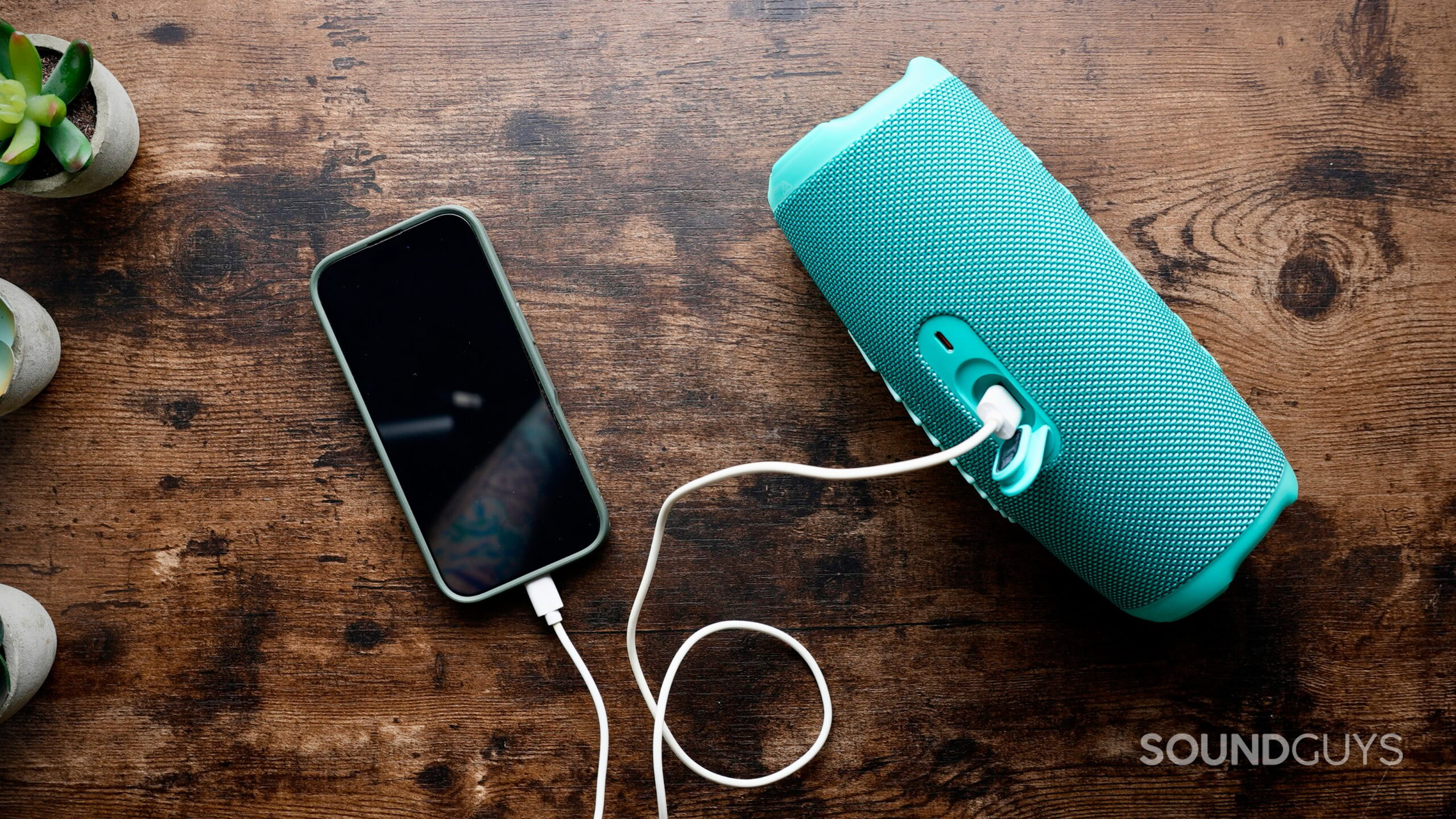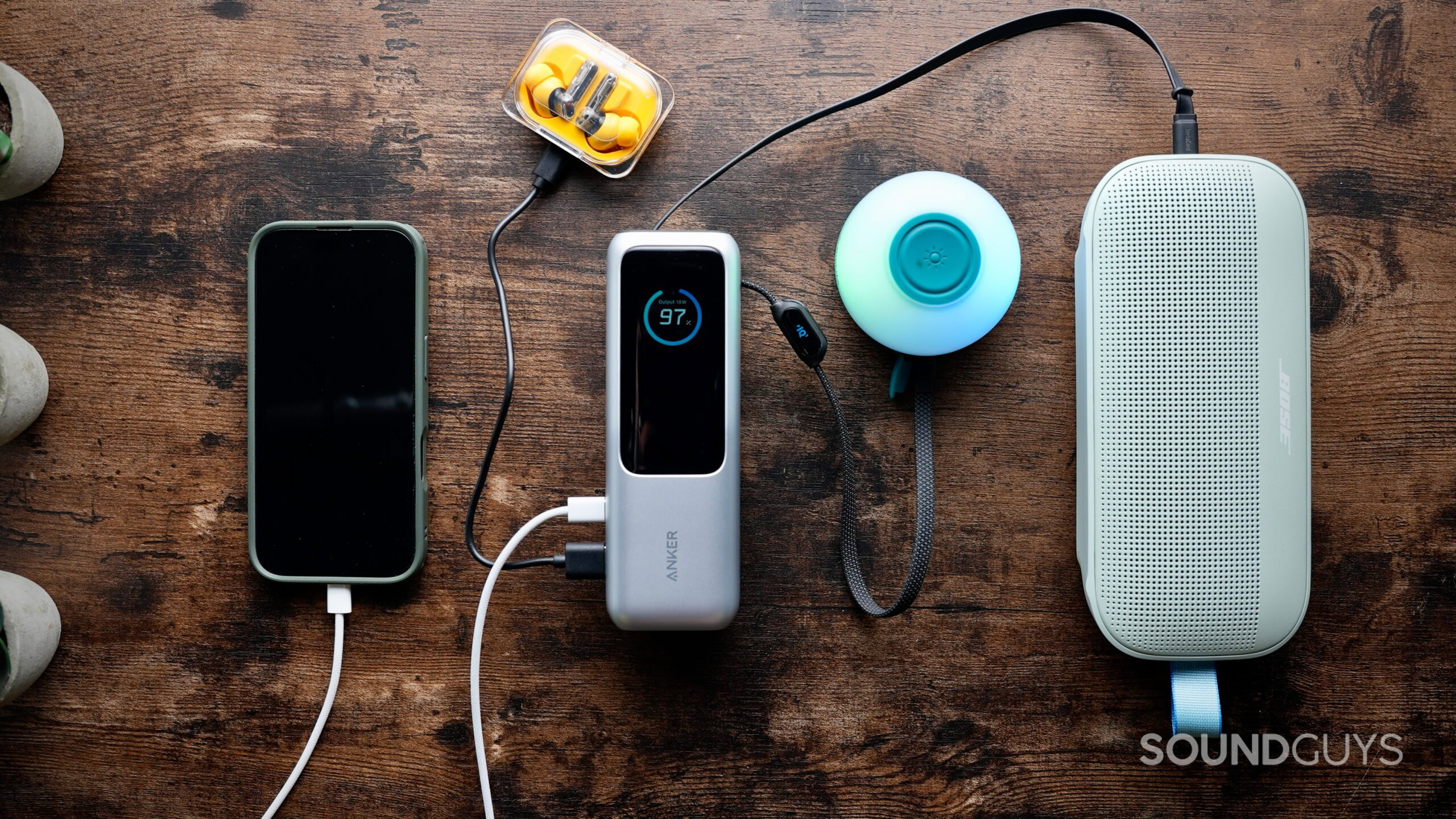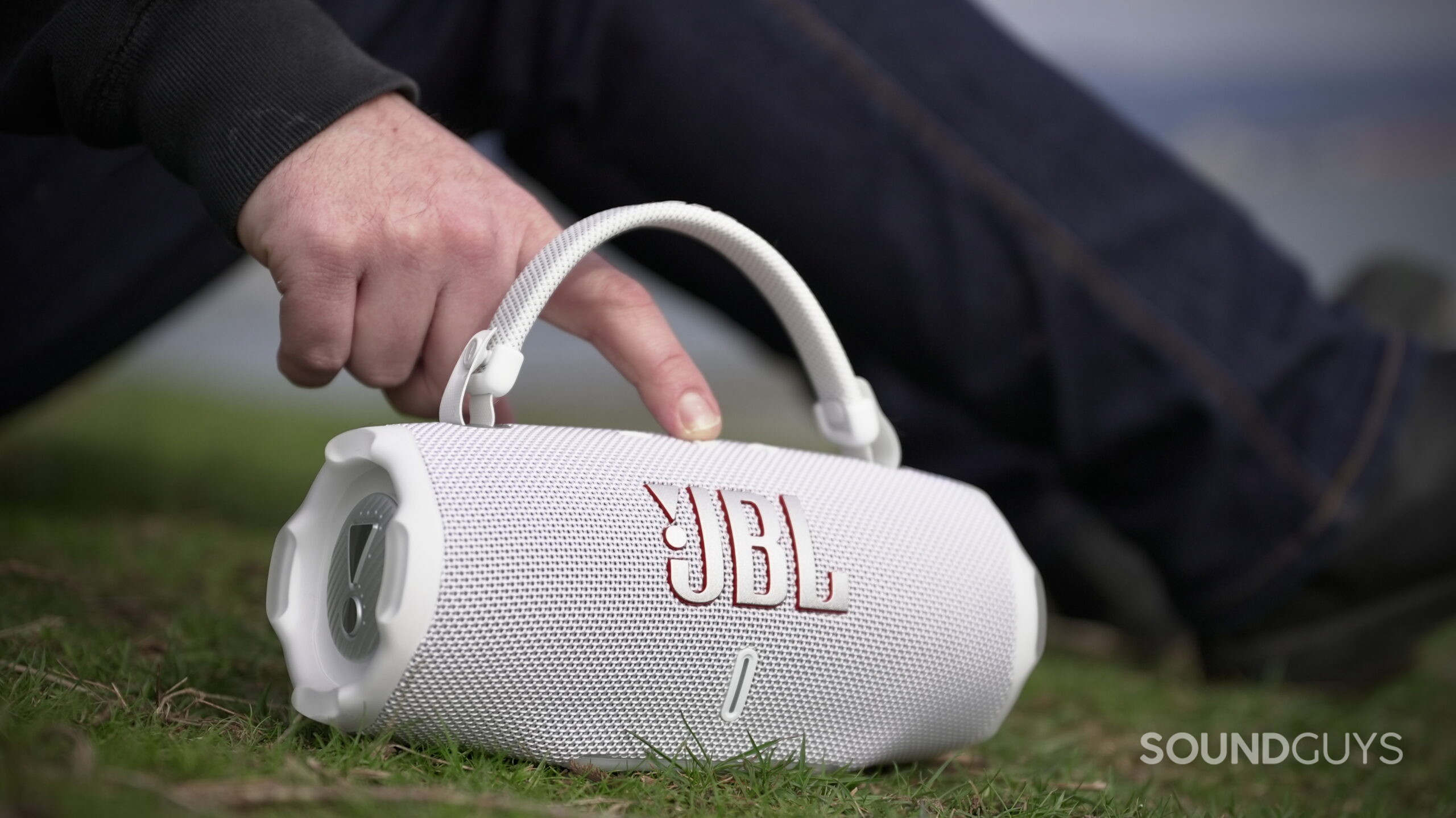All products featured are independently chosen by us. However, SoundGuys may receive a commission on orders placed through its retail links. See our ethics statement.
This is the most useless Bluetooth speaker feature in 2025
August 28, 2025

When was the last time you used a Bluetooth speaker to charge your phone? If you’re like me, probably never. And this is coming from a guy whose main speaker is still a JBL Charge 5.
Sound quality aside, battery life is what will really sell speakers in 2025, and a USB charge-out feature will only do the opposite. It drains the battery you actually bought the speaker for and barely gives your phone a boost. It’s not a feature anymore; it’s a leftover gimmick that gets in the way of what really matters to most listeners: longer playtime.
Have you ever actually used USB charge-out on a Bluetooth speaker?
Why USB charge-out doesn’t make sense anymore
USB charge-out started appearing in Bluetooth speakers roughly a decade ago. At the time, it solved a real problem. But these days, it feels more like filler on the spec sheet than a helpful feature. Back then, power banks weren’t cheap or easy to find, so the idea was simple: if your phone battery dipped too low, your speaker could give it a little extra juice. JBL even leaned into the concept so heavily that it named an entire product line after it, the JBL Charge series. That was when the original Charge offered just 10 watts of output, compared to the modern Charge 6, which delivers up to 45 watts. How time flies.
But nowadays, that trade-off just doesn’t make sense anymore. In most cases, the problem is that you are draining the same battery that powers your speaker. You know, the one you actually bought to keep the music going. You don’t want to be the person who kills the vibe halfway through a party or camping trip because your phone borrowed too much power. At best, your phone gets a tiny boost while your speaker dies early. At worst, your phone still doesn’t make it, and now the music’s gone too.
Even if you do try to use the USB charge-out feature, it’s rarely worth it. Most Bluetooth speakers that offer this option max out at around 15 watts of output, which barely nudges your phone’s battery. A good example is the Bose SoundLink Plus, which uses its USB-C port for charge-out, but only at 15W. That’s fine in an emergency, but it’s sluggish compared to even the cheapest power banks.
You get a slow trickle of power for your phone while sacrificing the battery you actually bought the speaker for—the one meant to keep the music going.
Worse yet, some speakers, like the Tribit StormBox Lava and Soundcore Boom 2, are still stuck on USB-A ports. That means you need to carry an old cable just to use the feature. In 2025, when everything else is moving toward USB-C and fast charging, this already feels outdated.
Power banks do it better

If your phone needs power on the go, a dedicated power bank is simply the better tool for the job. Brands like Anker, UGreen, and CukTech sell compact models that fit in your pocket, charge at 30 watts or higher, and can top up multiple devices simultaneously. They’re faster, more efficient, and won’t cut into your speaker’s playtime. If you’re not sure where to start, check out our favorite power banks over at Android Authority.
Even budget options put Bluetooth speakers to shame. A $25 power bank can recharge your phone two or three times. And unlike a speaker, it works with pretty much everything—earbuds, laptops, cameras, camp lights, and even a friend’s dead phone.
So, instead of relying on a speaker’s weak charge-out, just carry a power bank. It works better, lasts longer, and lets your speaker do what it was made to do: play music.
Let your speaker do what it’s meant to do

USB charge-out might have sounded clever a few years ago, but in 2025, it is a leftover feature that does not really solve anything. It drains the battery you bought for music, charges your phone too slowly to matter, and often relies on outdated ports. That’s not convenience. That’s a compromise.
Now, I’ll give credit where it’s due. The EarFun U Boom X gets it right. It includes a separate built-in 8,400mAh battery just for charging devices, which means your speaker can keep the music going without giving up any of its own juice. That’s the smarter way to do it. But even then, you are still limited to one port and slower speeds.
Ultimately, a power bank just does the job better. It is faster, more flexible, and works with all your stuff, your friends’ stuff, and not just your speaker.
Let your speaker handle the soundtrack and your power bank handle the charging. That way, the music keeps going, and your phone will live to see another playlist.
Thank you for being part of our community. Read our Comment Policy before posting.